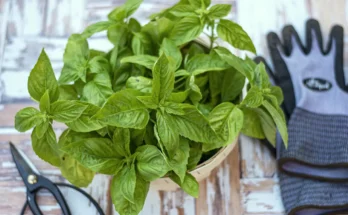Calla Lilies, also known as Zantedeschia, are captivating perennial plants that add elegance and beauty to any garden or indoor setting. Often associated with purity and bliss, these striking flowers are simpler to cultivate than you might think. Whether you know them as Callas, cartridges, or alcatraz, follow this guide to grow and maintain these stunning blooms successfully.
Choosing the Right Variety
Calla Lilies come in a spectrum of colors, including classic white, vibrant yellow, deep purple, and even black. Each variety has its own charm and preferred conditions, so select the ones that best suit your aesthetic and climate.
Planting Calla Lilies
When to Plant: The best time to plant Calla Lilies is in spring after the last frost, allowing them to bloom in late summer. In warmer climates (zones 8-10), they can be planted in fall for winter blooms.
Soil and Site: Calla Lilies thrive in well-draining soil rich in organic matter. Choose a site with partial to full sunlight. If your soil is heavy or clayey, amend it with compost or peat moss to improve drainage.
Planting Bulbs: Plant the rhizomes (bulbs) about 4 inches deep with the eyes (growth points) facing upwards, spacing them about 12 inches apart. Water generously to settle the soil around the rhizomes.
Watering and Feeding
Watering: These plants love moist conditions but dislike waterlogging. Keep the soil consistently damp, especially during dry periods. Overwatering can lead to root rot, so ensure good drainage.
Fertilizing: Feed your Calla Lilies with a balanced liquid fertilizer every four weeks during the growing season to support their vigorous growth and blooming.
Light and Temperature
Light: Calla Lilies perform well in full sun to partial shade. Too much shade may result in fewer blooms, so aim for a spot that receives a good balance of sunlight and afternoon shade, especially in hotter regions.
Temperature: These flowers prefer warmer temperatures but not extreme heat. If temperatures consistently exceed 85°F (29°C), provide some afternoon shade to prevent scorching.
Pruning and Maintenance
Deadheading: Remove spent blooms to encourage more flowers and to prevent the plant from going into seed production, which can reduce future blooms.
Aftercare: In colder regions (zones 3-7), Calla Lily rhizomes should be dug up before the first frost and stored in a cool, dry place over winter. Replant them the following spring.
Pests and Diseases
Calla Lilies are relatively resistant to pests and diseases. However, watch out for common issues like aphids and root rot. Maintain proper watering practices and clean up debris to prevent these problems.
Propagation
Calla Lilies can be easily propagated by dividing the rhizomes in early spring or fall. Each division should have at least one growth point. Replant these divisions to enjoy even more Calla Lilies in your garden.
Indoor Care
Calla Lilies also make excellent indoor plants. Grow them in pots with drainage holes, using a well-draining potting mix. Place them in a bright spot, away from direct sunlight, and maintain the same watering and feeding regimen as outdoor plants.
Enjoying Your Calla Lilies
Whether displayed in your garden or as cut flowers in your home, Calla Lilies bring a touch of sophistication and beauty. Their trumpet-shaped flowers and elegant foliage make them a favorite for wedding bouquets and arrangements, symbolizing marital bliss and purity.
By following these care tips, you can enjoy the exquisite beauty of Calla Lilies for years to come. With a little attention and care, these stunning blooms will be a highlight in your garden or home.




수원출장샵